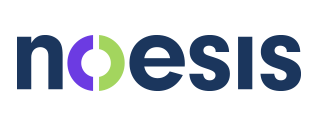Over the past 18 months, we’ve drastically changed our ways of working, so much so, that many of us are reluctant to give up our pandemic routines and go back to the office. What role does routine play in daily effectiveness? And how do we help employees shift to new hybrid or onsite work routines once it’s safe to be back in the office? Below are a few considerations.
Off-site and out of sight
Before COVID, managers only needed to look outside their office door, to see who was doing their job. With most employees opting for at least some days working from home, managers can fall prey to what is known as a distance bias: the unconscious discounting of the value of those employees not seen, on a regular basis. Managers are having to consciously evaluate employee performance and contribution based on outcomes and results, rather than whom they can ‘see’ down the hall.
Our preference for patterns
Why are routine habits so hard to change? Our brain likes to ‘hardwire’ any behavior we do repeatedly, into our hippocampus and basal ganglia for fast, low effort, retrieval. Routine behaviors provide comfort, efficiency, and control, helping free up our brain’s working memory and cognitive resources for more important things like making decisions and solving problems. Research at the University College of London found that it takes 66 days for most people to hardwire routine behaviors. * It’s easy to see how then, how our 18-month pandemic routines have become firmly coded into our long-term memory. Ever likely in such times of complexity and uncertainty, our brains are holding on tight to our established pandemic routines.
So how can we encourage employees to modify their familiar pandemic work routines to one that also satisfies new employer expectations around in-office work? Here are some research-based tips:
- Choice is like chocolate: Provide clear options and flexibility. The perception of having choice and influence over one’s life is highly rewarding to our brain and will aid in obtaining employee buy-in.
- Rationale reduces risk: Repeatedly provide clear logic and explanation for new work routine protocols to increase perceptions of fairness, and lower perceptions of personal risk in making work routine changes.
- Acknowledge the adopters: Reward those who adopt the new working protocols. Give positive feedback in person, and individually acknowledge those willing to adopt the new working norms. Boosting employees’ sense of social status in this way will further boost productivity, engagement, and buy-in.
- Consistency brings certainty: Provide clear work plan options and scheduling templates to provide employees with a sense of predictability and structure. As a manager, be consistent in modeling your adherence to a new working routine. Give people visibility as to your planned working locations.
- Empathy builds trust: Share with your people, how you’ve personally adapted to new working protocols, the benefits, the challenges, and how you’ve overcome them.
- Office as the desired destination: As successfully modeled by high tech companies, in particular, encourage the use of office collaboration spaces, incorporate perks such as healthy snacks, espresso machines, and visually pleasing décor to increase a positive association with office usage.
* European Journal of Social Psychology Eur. J. Soc. Psychol. 40, 998–1009 (2010) ‘How are habits formed: Modelling habit formation in the real world’, published 16 July 2009.


Recent Comments